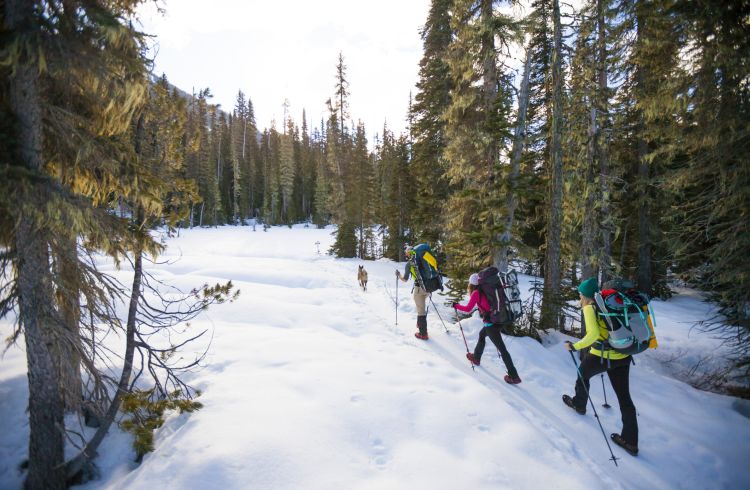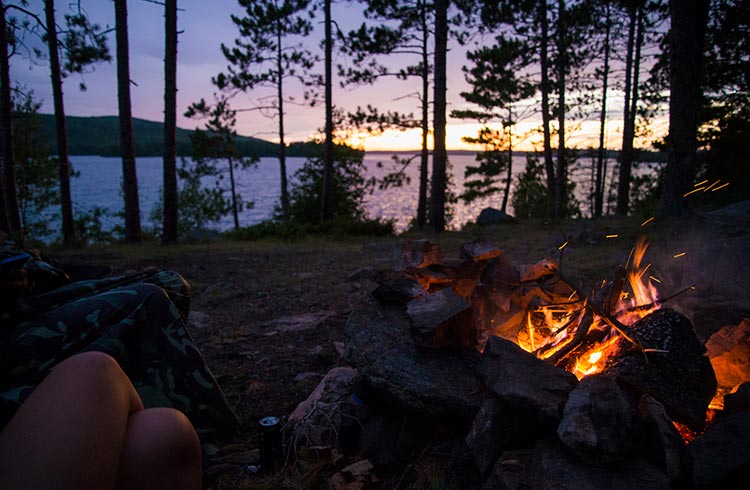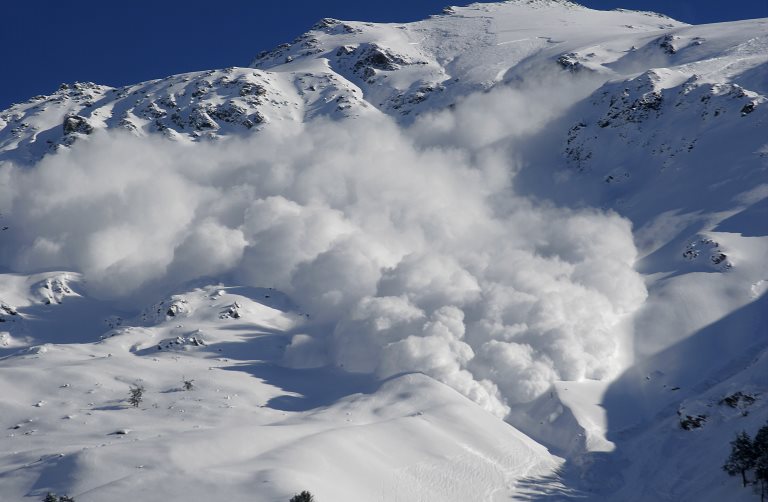Surviving Canada's Cold: Winter Tips for Travelers
Coronavirus (COVID-19) and travel: The situation around the world is changing dramatically. Various governments have changed their travel warnings to restrict travel during this time. To understand how this may impact cover under your policy, please go to our FAQs and select your country of residence.
For the latest travel warnings and alerts around the world, read about lockdowns and border restrictions.
Heading to Canada during winter? Here's how to prepare for the freezing cold temperatures so your trip is a safe and warm one.
Shares
 Photo © Getty Images/Christopher Kimmel
Photo © Getty Images/Christopher Kimmel
One of Canada's major attractions as a holiday destination is the diversity of its terrain, which just so happens to be ripe for skiing, snowboarding and many other outdoor activities. There is, however, one feature that transcends Canada's geographical gamut, one word that can encompass this land: cold.
Although Canadians will be quick to point out to tourists the difference between cold and cold, for most of us the winter temperatures here sink far below anything we maybe used to back home.
Yet most cold weather injuries and incidents are the result of carelessness or a lack of knowledge. With the right packing, planning and preparation you'll be ready.
Check the weather
Always make sure to check the weather forecast before heading out and take special notice of any extreme weather warnings. There are regular weather updates on local TV, radio and internet. Or you can check the conditions online here. If you're planning to ski or snowboard, the resorts will generally have their own weather/snow forecasts web pages.
Although Vancouver and the southwest coast experience comparatively mild winters, sudden changes in weather are not uncommon. Wind chill is also huge factor when considering cold. Whether you're sitting on a chairlift in Whistler or walking along the Canadian coastline, a strong breeze is enough to cut through your clothing and chill you to the bone. Although weather reports will usually include a wind chill warning, make sure you prepare for sudden blustery weather with wind resistant clothing.
What clothing should you take?
More clothing is the obvious answer to extreme cold. Wear lots of layers; take a hat, gloves, a scarf and something to cover your face. In fact, just remember to stop and think about what your mother might say before stepping out the door.
This all sounds like common sense, but there a few small things people often forget that could make big difference.
Cotton is not on
Unlike wool or polyester fleece, cotton won't provide any warmth if you get wet – which, since cotton also tends to make you a little sweaty, could be problematic. Try to avoid wearing a lot of cotton if you know it's going to be cold.
Appropriate shoes are essential
The ground is going to be much colder than the air temperature, and if your shoes have thin soles or are leaking water, you'll lose a large amount of body heat through your feet.
Exercising
While exercising is a good way to increase your body temperature in a crisis, it's also wise to unzip the outer layers of your clothing as you heat up. In extreme cold sweat will freeze to your skin, and sap your body heat.
Waterproof clothing
Although Canada is a very dry country overall, Vancouver experiences almost double the annual rainfall of that famously soggy city, London. So, remember to take an umbrella or wear waterproof clothing. The thickest jacket won't help if you're soaked to the skin.
Warm drinks and alcohol
Warm drinks are a great way to ward off the cold, but alcohol and caffeine will actually make you lose heat more rapidly. Both shift blood flow to your extremities, so while you may feel warmer, you really aren't – something to keep in mind if you choose to walk home from the pub.
Never step outside without rugging up
Most importantly, never go outside without rugging up first, even if it's just to put out the garbage. Every Canadian has their own story about someone who got locked out of the house in their pyjamas/bath robe/underwear and froze to death on their own doorstep.
These may be nothing but urban myths, but there a plenty of documented incidents. In early 2011, an elderly woman froze to death in a residential driveway just minutes from her home in Toronto.
Hypothermia and frostbite
If you do find yourself caught out in the cold, the two major threats are hypothermia and frostbite.
Frostbite symptoms
In extreme cold, exposed skin can become frostbitten in 30 seconds, so cover up as quickly and completely as you can. Areas affected by frostbite will look pale grey or white, and have a waxy texture. You could experience numbness or localized pain, as well as swelling and blistering.
Whatever you do, don't rub or massage the affected area, and don't expose your skin to direct heat. Use your own body temperature or press something warm against the area. If possible, avoid warming up your skin until you know you can keep it warm.
Frostbite is a very serious condition, affecting not only the skin but also underlying tissue, including muscle and bone. Bad cases can result in amputation, so seek treatment as soon as possible.
Frostnip vs frostbite
However, don't panic and rush yourself off to hospital at the first little tingle. There is a less severe form called frostnip, which affects only the outer layers of skin. It's common when skiing or snowboarding, most often on the cheeks and the tip of the nose, and is characterized by soft yellowish or white skin and a painful tingling or burning sensation.
You can generally use the warmth of your hand to bring a bit of life back to the area. But remember, don't rub unless you want a nasty raw rash.
Signs of hypothermia
If you're stuck out in the cold, you need to watch for signs of hypothermia, in yourself and in friends or family. If someone is shivering, seems confused, weak or starts mumbling they could be in trouble. Get them inside or into shelter as soon as possible, remove any wet clothing and try to gradually raise their body temperature.
If you are traveling with children or an elderly relative, be aware they will be more susceptible to the cold. Dry, frigid air can also exacerbate the symptoms of asthma, so make sure to keep a close eye on your kids and companions.
Get a travel insurance quote for Canada
You can buy at home or while traveling, and claim online from anywhere in the world. With 150+ adventure activities covered and 24/7 emergency assistance.
Related articles
Simple and flexible travel insurance
You can buy at home or while traveling, and claim online from anywhere in the world. With 150+ adventure activities covered and 24/7 emergency assistance.
Get a quote

6 Comments
Very nice insights.
I will be applying for scholarships to study a PhD in Canada then.
Thank you very much. Many fears and worries are cleared.
I’m a Canadian who has lived in the United States for almost 30 years. In the last week I’ve heard of snow in Colorado and Montana. None in Canada and it's September 1st. Toronto would be lucky to have 1 foot of permanent snow in the winter months and I remember one year it was green, of which there are about 3 good months for it. Whereas our neighbours to the south in Buffalo seems to thrive with 4 feet of it. In Boston, I had to shovel so much, I almost died. You couldn’t see traffic when making turns. They ran out of places to put the stuff!!! Montreal/Quebec/Ottawa get snow and cold. In Chicago, it was below 0oF for one month straight. The air in my tires always leaked out. Aviation fuel at O’Hare International Airport almost froze. The states bordering Canada get the same cold weather as Canada. There’s no wall there. Upper New York States get slammed with snow…. 4 feet, from the Great Lakes effect. Toronto, Hamilton, Kingston get next to nothing by comparison because they’re on the leeward side of the lakes. Halifax is not known for it’s snow alone and it doesn’t get that cold. St. John, Newfoundland isn’t either. Yes, Canada is further north, but all this talk about, “Ohhhhhh… Canada…. really cold” is a bunch of horse feathers. If you don’t want the cold that lasts about 3-4 months…. go somewhere in Canada where is isn’t that bad. Most people do not live in the arctic. That’s cold. The prairies in Alberta, Saskatchewan and Manitoba get cold because of the cold air flowing down from the arctic but this air does not stop at the border, the American states get it too. But not much snow. But for god sake’s, don’t make it out to be COLD COOOOOOLD 9 months of the year.
thank u for the info.
i have not been to Ont in wintertime.
So its a first.
ill be careful.
mabuhay
Canada's arctic is cold, everywhere else is no colder than any place in the northern US. This article is entirely bullshit.
The article mentioned finding extra blankets in a power outage. Can people survive below zero temps with "extra blankets" ?
I was almost moved to start my own blog (well, almost…HaHa!)
Fantastic job. I really loved what you had to say, and more
than that, how you presented it. Too cool!
<a href="https://snowsolutionhub.com/why-does-snow-not-melt-with-a-lighter/"> snow in 2022 guides </a>